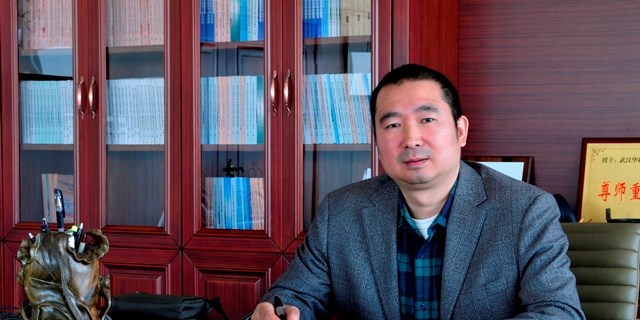The procurement of valves for use in power plants in China is still based, in many cases, on cost and quality, safety and industry standards are secondary issues. Valve World spoke with Mr Zhang Chuanhu of the Valve Standardisation Technical Committee of China Electricity Council, amongst other roles, who had plenty to say on this subject.
VW: Can you tell us a bit about your position and your job on the steering committee?
ZC: I am currently the vice chairman of the Valve Standardisation Technical Committee of China Electricity Council, member of China Electricity Boiler and Pressure Vessels Qualification Exams Committee, professor and examiner at China National Quality Supervision of Valve Security and Maintenance Personnel Examination and Certification, and consultant of Thermal Power Generation magazine. I am also the general manager of Wuhan Huake Energy Environment Science & Technology Co., Ltd.
VW: How did you come into the valve industry?
ZC: I first handled valves in 1995 when I was working at the Jiaozuo AES Wanfang Power Plant, dealing with their standard operating procedures of installation and adjustments. In October 2000, I became a member of the Valve Standardisation Technical Committee of China Electricity Council and was put in charge of writing the “Code for Power Plant Boiler Safety Valve Operation”. In 2005, I took part in writing one electrical power industry standard, i.e. “Standard Technical Specifications of Power Plant Boiler Safety Valves”, one national standard of “Offline Calibration and Assessment of High Pressure and Ultra High Pressure Safety Valves”, and one mechanical industry standard, i.e., “code of power station high pressure ball valve” and “Specifications for Power Plant check Valve”.
In 2007, my company cooperated with Dresser Inc., working in after-sales services for valve reconstruction and spare parts. They have since become the Masoneilan and Consolidated Green Label Valve Management and Maintenance Centres for GE.
VW: What is your opinion on the development of the current Chinese market and power industry over the past years?
ZC: I have been in the power station valves industry for more than 21 years, and clients are generally very serious about boiler safety valves, control valves, and other high-end valves. The end users in power industry usually use international brands, but they still favour the strategy of lowest-price bids, which leads to many international brands with different levels on quality are bidding for the same project. Then after the valves are put into operation, the operators have to repurchase new valves at which time plants often then switch to higher end imported products. Competition for lower prices has brought bad consequences to the safety and stability of operating machines economically.
VW: What challenges do you face at the Valve Standardisation Technical Committee of the China Electricity Council?
ZC: The biggest challenge I have faced since I have been here has been the lack of enforcement of national standards, resulting in security issues in valve selection and installation. Boiler works and power plants need to improve on understanding operating standards. For example, section 1 of the ASME “Safety Valves and Safety Relief Valves” PG-67.4.1 clearly states that “one or more power-actuated relief valves shall be provided in direct communication with the boiler when the boiler is under pressure”. The “Code of Safety Valves for Power Station Boilers” (DL/T959-2014) clearly requires that “power station boilers using one or more PCVs(Pressure Control Valve) in direct connection must have a total combined relieving capacity of no less than 10% of the maximum design steaming capacity of the boiler at all times. According to the requirements of this section, a PCV installed in direct connection with the boiler should have an isolating ball valve installed between the PCV and boiler for PCV repair. The ball valve port area shall at least equal the area of the inlet of PCV, and should include a means to clearly identify whether the valve is in the open or closed position”. Some boiler manufacturing companies and power station clients do not follow these regulations, and install supplementary loaded safety valves in 1000MW boilers in place of power-actuated relieving valves, and do not follow regulations for back-up power-actuated relieving valves, resulting in serious threats to the safe, stable, and economic operation of machines.
VW:What are the differences between the new and old standards?
ZC: The main differences are in the application of new technologies, paying more attention to increasing security and strengthening requirements on energy saving. For example, in the “Code of Safety Valves for Power Station Boilers” (DL/T959-2014) Session 8.4.6, online calibrators used for online safety valve testing may be used for pretesting exhaust levels from operating safety valves. With the thorough execution of this rule, vast amounts of steam wasted due to manual exhaust removal can be saved every year. It can also prevent damage caused through boiler safety valve failures.
VW: What challenges do you see for the future of the valve market?
ZV: I believe that the greatest challenge for the valve market is for China to research and develop policies to encourage the application of power station safety valves, control valves, and other high-end valves to minimize the negative influences of competing on lowering prices.
VW: How do you see thermal and nuclear power development in China?
ZC: I believe that what is necessary is to control the pace of development in thermal power plants, to increase the capacity of thermal power plants, to strongly develop ocean-side nuclear power, control nuclear power in the interior regions of the country, and develop more nuclear power business abroad.


